|
What Effect Has the
Internet Had on the
Value of Antiques and Collectibles?
by Bob Brooke
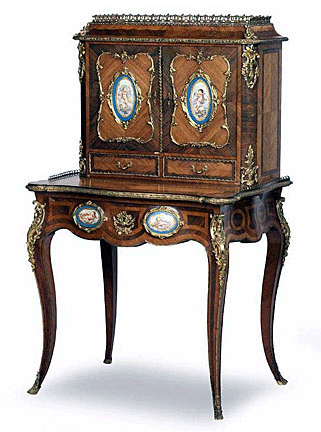 The
well-known mantra of real estate sales is location, location, location.
With antiques and collectibles, the mantra has always been condition,
condition, condition—that is, before the Internet. The
well-known mantra of real estate sales is location, location, location.
With antiques and collectibles, the mantra has always been condition,
condition, condition—that is, before the Internet.
Though it didn’t happen immediately, over time the Internet has had a
dramatic effect on the value of antiques and collectibles. At first, the
Internet was a way of disseminating information. But when eBay came on
the scene, everything changed. No longer could people just find out
about antiques and collectibles. Now they could buy and sell them as
well. The process was so easy that anyone could become an antiques and
collectibles dealer literally overnight.
Back before the Internet, collectors wanted objects to appear as though
they had just left the assembly line. Damage, especially visible on the
surface at arm's length, was a major down-grade. Any defect resulted in
a major deduction in value.
The established collecting community had a clearly defined condition
criteria. And while collectors shared this among themselves, no one ever
wrote it down, so the buying public didn’t have a clue.
 Collecting
antiques used to be a pastime of the rich. But that changed in the 1960s
with the birth of the yard and garage sale. Now anyone could buy and
sell antiques and collectibles easily. Dealers bought to replenish their
inventory and collectors bought to grow their collections. There was a
lot of energy involved—getting to the sales, browsing them, and carting
purchases home. Collecting
antiques used to be a pastime of the rich. But that changed in the 1960s
with the birth of the yard and garage sale. Now anyone could buy and
sell antiques and collectibles easily. Dealers bought to replenish their
inventory and collectors bought to grow their collections. There was a
lot of energy involved—getting to the sales, browsing them, and carting
purchases home.
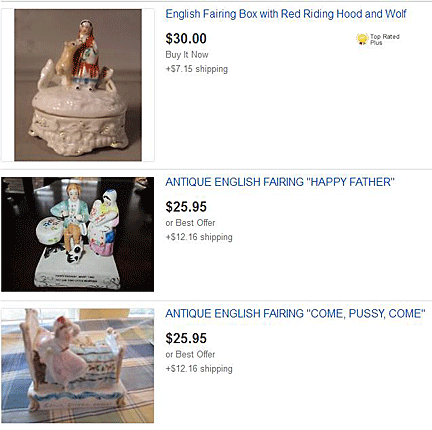 With
the dawn of eBay, buying and selling became really easy. There was no
need to get to the sale, searching keywords made finding objects simple,
and the seller shipped the purchases. All the buyer had to do was pay by
credit card and perhaps use a razor blade to open the package. What was
missing was the handling of the object before the sale, a vital
ingredient in collecting. With
the dawn of eBay, buying and selling became really easy. There was no
need to get to the sale, searching keywords made finding objects simple,
and the seller shipped the purchases. All the buyer had to do was pay by
credit card and perhaps use a razor blade to open the package. What was
missing was the handling of the object before the sale, a vital
ingredient in collecting.
The majority of Internet sellers are novices to the antiques and
collectibles business aren’t collectors. As a result, they have no
knowledge of condition grading. Sellers often make objects look better
than they really are, even with multiple views. And because standards of
condition aren’t spelled out, new sellers usually over grade their
wares.
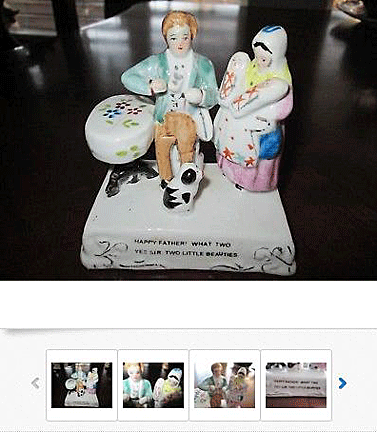 As
a result, serious Internet buyers automatically lower condition grading
in their minds when evaluating what they will pay or bid for an object
on the Internet. The end result is that even if the object's condition
is graded fairly,it may still fail to achieve full value because of the
inherent distrust in online condition grading. As
a result, serious Internet buyers automatically lower condition grading
in their minds when evaluating what they will pay or bid for an object
on the Internet. The end result is that even if the object's condition
is graded fairly,it may still fail to achieve full value because of the
inherent distrust in online condition grading.
But one thing hasn’t changed. As in any retail transaction, the
principle of caveat emptor—let the buyer beware—still applies: The
burden falls on the buyer to know what he or she is buying.
Though condition is still a major value point today, it’s importance has
changed. In fact, most people believe an object’s value increases based
on its age and scarcity, rather than its condition. But if no one wants
to purchase an object, it literally has no value, no matter how good its
condition or how rare it is.
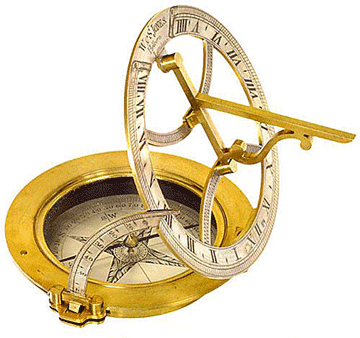 Before
the arrival of the Internet, it was difficult for people to judge an
object’s rarity. Their scope was limited to the objects they saw for
sale in antiques shows, antiques shops, flea markets, garage and yard
sales, in that order. In many cases, they had no idea how scarce or rare
an object was unless someone told them. Before
the arrival of the Internet, it was difficult for people to judge an
object’s rarity. Their scope was limited to the objects they saw for
sale in antiques shows, antiques shops, flea markets, garage and yard
sales, in that order. In many cases, they had no idea how scarce or rare
an object was unless someone told them.
Prior to the Internet, these goods trickled into the market as they
became available via auction, estate/tag sales, and private purchase.
Now objects thought to be extremely rare are far more common than people
realize because of the large number of items still in private hands.
Prior to the Internet, these goods trickled into the market as they
became available through garage and estate sales, auctions, and private
purchases.
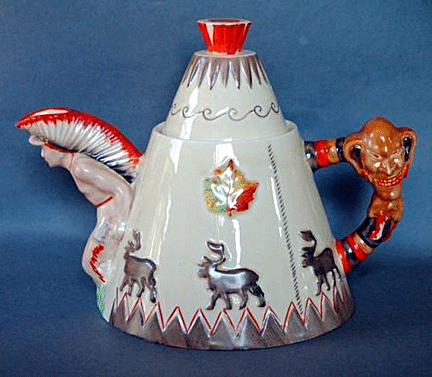 Today,
the Internet has flooded the antiques and collectibles market with
enormous quantities of objects. The low cost of listing goods, whether
for direct sale in an Internet antiques mall site or at auction has
encouraged anyone with Internet access to become an antiques and
collectibles seller. Today,
the Internet has flooded the antiques and collectibles market with
enormous quantities of objects. The low cost of listing goods, whether
for direct sale in an Internet antiques mall site or at auction has
encouraged anyone with Internet access to become an antiques and
collectibles seller.
Before the Internet, people had no idea what prices goods sold for,
especially dealer sales. Although auction results were available, they
weren’t available to the public. And only dealers used antiques and
collectibles price guides.
All this changed with the Internet. Search engines, whether general or
site-driven, allow a quick check of existing sale prices. Internet
auction sites, and such, allowing anyone to search completed auctions.
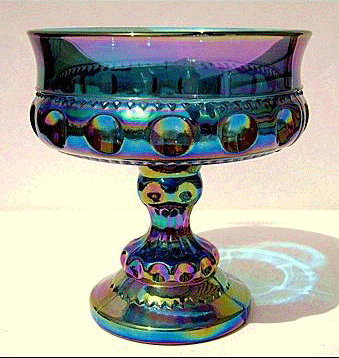 Also,
before the Internet, people showed little interest in searching their
attics, basements, closets, garages, and sheds for objects that retailed
in the $25 to $100 range, especially when they were lucky to obtain half
this amount when selling to a collector, dealer, or at auction. Also,
before the Internet, people showed little interest in searching their
attics, basements, closets, garages, and sheds for objects that retailed
in the $25 to $100 range, especially when they were lucky to obtain half
this amount when selling to a collector, dealer, or at auction.
Internet sellers find $25 more than ample incentive to seek out and list
an object. In fact, many sellers have little or no problem listing
objects that eventually sell for less than $10. The Internet effectively
eliminates the middle man in selling. Even when the Internet seller is a
dealer, there’s usually only one level—a garage sale, flea market, or
auction—between the owner and the final buyer.
And Internet sellers are price wise. When an object sells well, it’s
often common to find three to four identical ones listed for sale within
a couple of months. Scarcity today can be measured by the number of
times a particular item appears for sale. Desirability can change
because people have been told a certain group of items is “hot.”
 But
many of those selling at garage and estate sales and fleamarkets use the
Internet, especially eBay to set prices for their items. The problem
with this is that eBay and other general merchandise auctions aren’t
just auctions, they’re entertainment for many people. Buyers bid prices
up just so they can “win” the auction. This throws the true value of
antiques and collectibles sold at these auctions beyond what it should
be. So are Internet prices a true reflection of what an object is worth? But
many of those selling at garage and estate sales and fleamarkets use the
Internet, especially eBay to set prices for their items. The problem
with this is that eBay and other general merchandise auctions aren’t
just auctions, they’re entertainment for many people. Buyers bid prices
up just so they can “win” the auction. This throws the true value of
antiques and collectibles sold at these auctions beyond what it should
be. So are Internet prices a true reflection of what an object is worth?
Without interpretation, probably not. And sellers at physical sales
aren’t going to take the time to research end-of-auction amounts and
average them to get an idea of the value of an object.
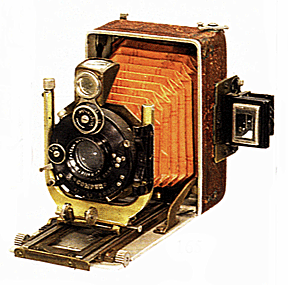 Internet
pricing within a collecting category appears to follow a predictable
pattern. When the collecting category first appears on the Internet,
prices are strong. Even common items sell, sometimes for three to four
times the antiques and collectibles book prices. But because goods flood
the Internet, the amount of offerings increases five or ten times.
Buyers no longer have the time to view all the listings. Values fall and
eventually stabilize. Sellers become discouraged and move onto another
"hot" category. Internet
pricing within a collecting category appears to follow a predictable
pattern. When the collecting category first appears on the Internet,
prices are strong. Even common items sell, sometimes for three to four
times the antiques and collectibles book prices. But because goods flood
the Internet, the amount of offerings increases five or ten times.
Buyers no longer have the time to view all the listings. Values fall and
eventually stabilize. Sellers become discouraged and move onto another
"hot" category.
Finally, the values of antiques and collectibles float on the Internet.
They constantly go up and down and aren’t a good measure of an object’s
worth. Unfortunately, this volatility causes overall values to fluctuate
more than they should.
<
Back to Antiques Extra! Archives
Next Editorial > |
